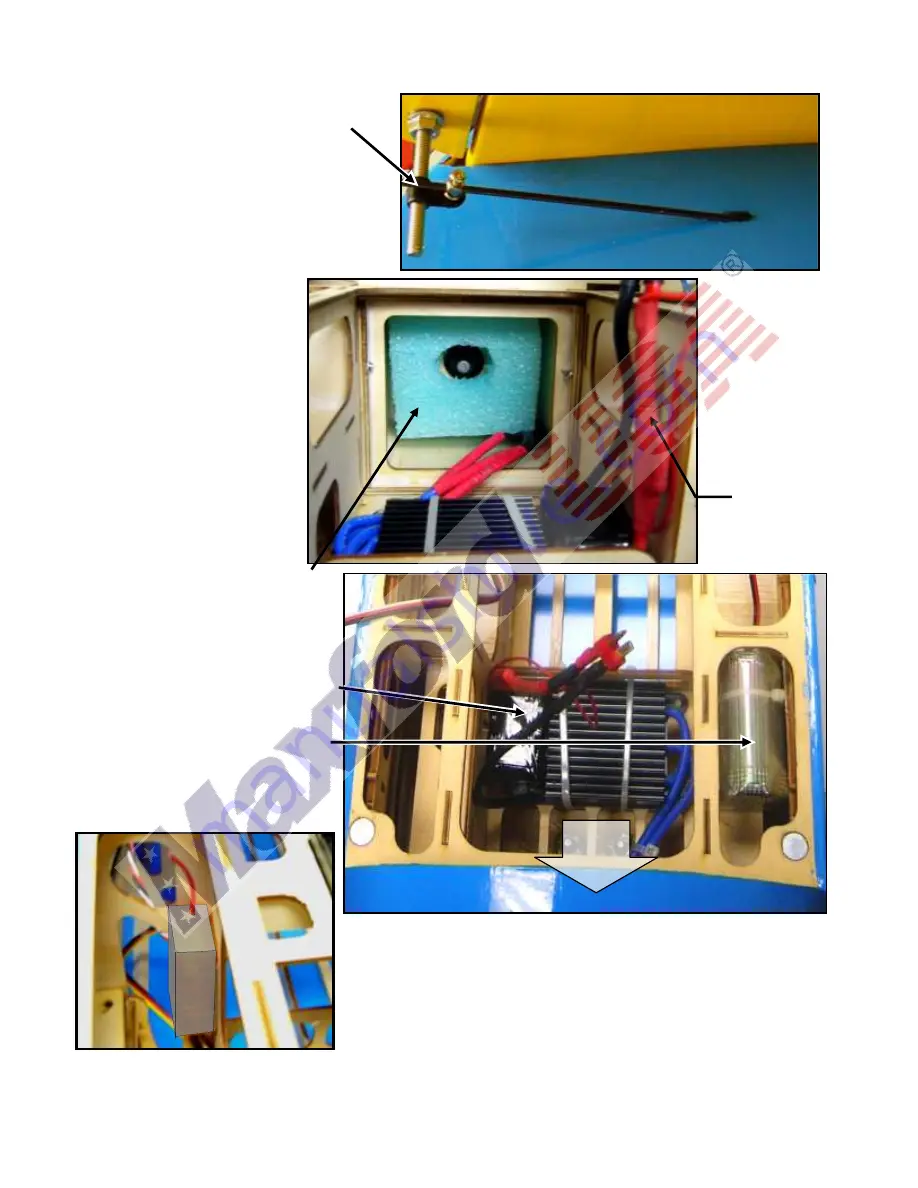
Page
10
of 18
Copyright 2015 – PT17 / S150209
60.
Hold your elevator at neutral (on the same level as the horizontal stabilizer) and tighten the EZ Link connector onto the
elevator pushrod.
61.
If necessary, cut off the portion of the elevator
pushrod that extends excessively behind the
elevator servo‟s EZ Link connector.
(NOTE: Leave approx.
1/2
-inch of
extra pushrod for possible adjustments).
62.
If you use a glow engine, install your throttle
servo and connect the throttle pushrod between
your engine and throttle servo.
(NOTE: For better appearance and
airframe longevity, we recommend
using an electric power system for
this model. For scale-like flying
using our U638109 motor, 100A
ESC and a 19x6 propeller, you
may use two 4S/4,000 mAh or
above LiPo batteries in series. For
extra power, we recommend using
a 10S or 12S/3,900mAh or above
LiPo battery – or three 4S LiPo
batteries in series, with an 18x8 to
20x8 propeller.)
63.
If you use an electric motor,
confirm or correct its direction
of rotation.
(NOTE: If you are using an electric
power system, inserting some foam
rubber (not included) inside the engine
mounting box may serve as a „safety
cushion‟ for your flight battery.
The PT-17‟s spacious cockpit permits
great flexibility in where you install your
radio and power system components.
During all of our EP flight tests the ESC
was mounted behind and below the
engine mounting box and we secured
our radio‟s battery above and to the left
of the ESC as pictured at the right. Our
receiver was held in position with
double-sided foam tape at the right-hand
side of the servo tray as shown below.
Wait until you are ready to adjust your PT-17‟s center of gravity to decide on the final positions of your batteries.
IMPORTANT:
To avoid
sparks,
always
c
onnect the
ESC to your
flight battery
first,
THEN
connect the
anti-spark
connector.
Nose




































